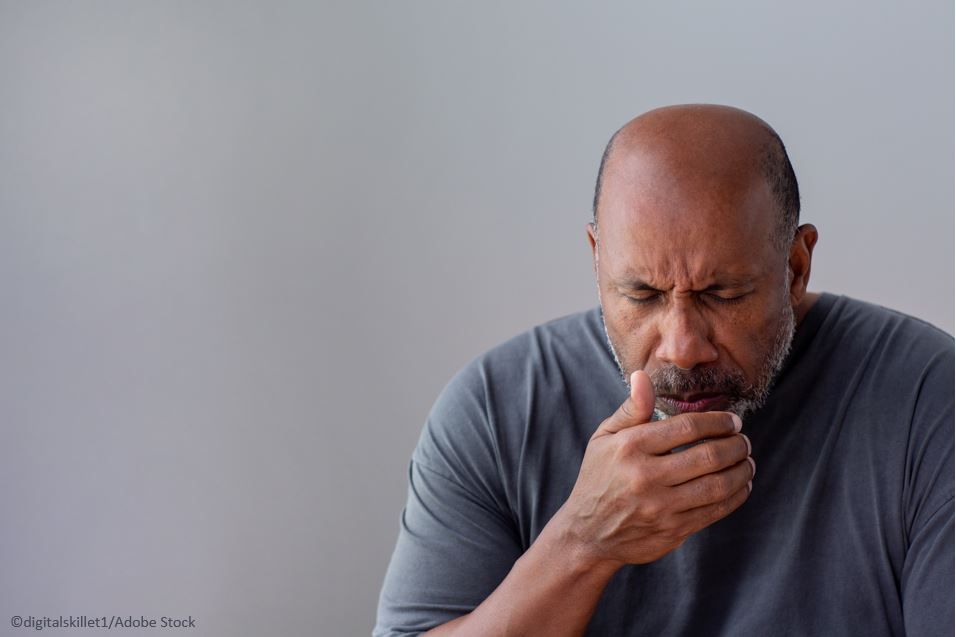- Clinical Technology
- Adult Immunization
- Hepatology
- Pediatric Immunization
- Screening
- Psychiatry
- Allergy
- Women's Health
- Cardiology
- Pediatrics
- Dermatology
- Endocrinology
- Pain Management
- Gastroenterology
- Infectious Disease
- Obesity Medicine
- Rheumatology
- Nephrology
- Neurology
- Pulmonology
LAMA-LABA Treatment for COPD More Effective than ICS-LBA: New Findings
Patients with chronic obstructive pulmonary disease (COPD) being treated with inhalers containing long-acting muscarinic antagonists (LAMAs) and long-acting β-agonists (LABAs) had improved clinical outcomes compared with patients being treated with LABA and inhaled corticosteroid (ICS).
The findings indicate LAMA-LABA therapy should be preferred over ICS-LABA therapy, according to the researchers. The study was published in JAMA Internal Medicine.1

Previous studies had conflicting results regarding the use of LAMA-LABA vs ICS-LABA, they noted. Several randomized clinical trials found LAMA-LABA reduced the rate of COPD exacerbations and had fewer pneumonias over ICS-LAMA; however, other trials found the opposite.
“Uncertainty about optimal COPD therapy has been further compounded by problems of generalizability in clinical trials for COPD,” the authors added, with the populations treated in clinical practice not matching those enrolled in randomized clinical trials.
They performed a cohort study using commercial claims, with the goal of comparing COPD exacerbation and pneumonia hospitalization of patients started on LAMA-LABA inhalers vs ICS-LABA inhalers.
There were 137 833 in the cohort: 30 829 started LAMA-LABA therapy and 107 004 started ICS-LABA therapy. Half of the patients were women (50.4%), and the mean age was 70.2 years. Women were more likely to receive ICS-LABA therapy compared with men (51.3% vs 48.6%).
FINDINGS
Patients starting on LAMA-LABA therapy had fewer moderate and severe exacerbations, as well as fewer pneumonia hospitalizations. These patients were also less likely to have had baseline GOLD (Global Initiative for Obstructive Lung Disease) stage E, which is patients with at least 2 moderate and/or 1 severe COPD exacerbation in the last year.
Patients starting on LAMA-LABA were more likely to have undergone baseline spirometry measurement and more likely to have received their first prescription from a pulmonologist.
In the matched cohort, 8151 patients had a first moderate or severe exacerbation during 23 983 person-years of follow-up. For new users of LAMA-LABA, there was an 8% reduction in the rate compared with new users of ICS-LABA (hazard ratio [HR], 0.92; 95% CI, 0.89-0.96).
First hospitalization for pneumonia occurred 2378 times during 25 891 person-years of follow-up. New users of LAMA-LABA therapy had a 20% reduction in the rate of first pneumonia hospitalization compared with new users of ICS-LABA (HR, 0.80; 95% CI, 0.75-0.86).
These findings were consistent with the FLAME trial,2 a multicenter, randomized, double-blind, double-dummy, parallel-group, noninferiority trial, which investigated if LAMA-LABA once daily was at least as effective as ICS-LABA twice daily when it came to prevention exacerbations. The trial found LAMA-LABA was more effective.
Discordant results
However, the IMPACT3 and ETHOS4 trials had found no benefit of LAMA-LABA over ICS-LABA in increasing the time to first moderate or severe COPD exacerbation. IMPACT was a phase 3, randomized, double-blind, parallel-group, multicenter trial and ETHOS was a phase 3, randomized, double-blind, parallel-group trial. Both investigated the impact of ICS-LAMA-LABA vs ICS-LABA on the annual rate of moderate or severe COPD exacerbations.
The authors listed several limitations to their study, including limited follow-up related to issues with nonadherence, which may limit generalizability of the findings, and analysis of prescription fills cannot account for patients not using inhalers or for those who use them incorrectly.
They concluded that the findings “provide further support for recommendations in clinical guidelines favoring LAMA-LABA over ICS-LABA therapy.”
References
1. Feldman WB, Avorn J, Kesselheim AS, Gagne JJ. Chronic obstructive pulmonary disease exacerbations and pneumonia hospitalizations among new users of combination maintenance inhalers. JAMA Intern Med. Published online May 22, 2023. doi:10.1001/jamainternmed.2023.1245
2. Wedzicha JA, Banerji D, Champan KR, et al; FLAME investigators. Indacaterol–glycopyrronium versus salmeterol–fluticasone for COPD. N Engl J Med. 2016;374(23):2222-2234. doi:10.1056/NEJMoa1516385
3. Lipson DA, Barnhart F, Brealey N, et al; IMPACT Investigators. Once-daily single-inhaler triple versus dual therapy in patients with COPD. N Engl J Med. 2018;378(18):1671-1680. doi:10.1056/NEJMoa1713901
4. Rabe KF, Martinez FJ, Ferguson GT, et al; ETHOS Investigators. Triple inhaled therapy at two glucocorticoid doses in moderate-to-very-severe COPD. N Engl J Med. 2020;383(1):35-48. doi:10.1056/NEJMoa1916046
